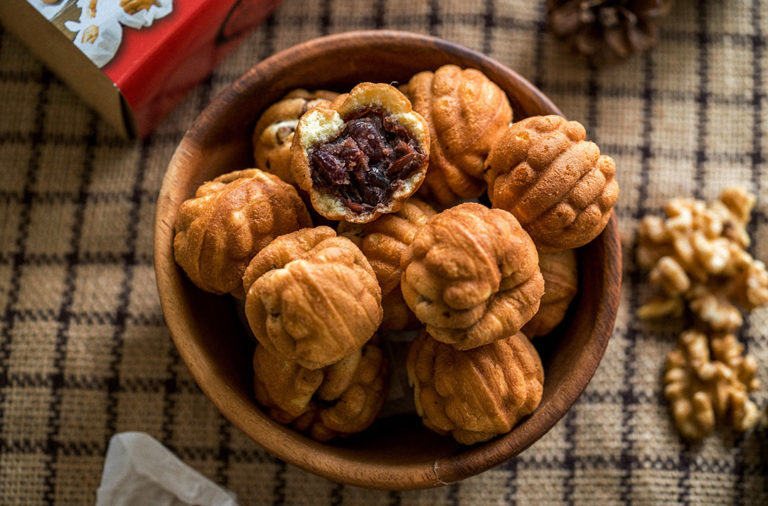Korea’s Walnut Delight
Discovering the Sweet Charm of Hodu-gwaja (호두과자)
A Pastry Rooted in Tradition
Hodu-gwaja originated in Cheonan, a city known for its agricultural abundance and walnut production. Created by combining local ingredients, this confection was designed to celebrate the nutty richness of walnuts while offering a sweet snack that could be enjoyed by all. Today, Hodu-gwaja has transcended its regional roots and become a beloved treat nationwide.
A Perfect Bite of Flavor and Texture
The Art of Crafting Hodu-gwaja
Making Hodu-gwaja is a meticulous process. Batter is poured into walnut-shaped molds, followed by a dollop of the rich filling, and then sealed with another layer of batter. These molds are heated evenly to achieve the perfect bake, ensuring each piece emerges with a beautiful golden hue and a fragrant aroma.
From Tradition to Modern Appeal
While Hodu-gwaja remains steeped in tradition, modern variations have also emerged. Some bakeries experiment with alternative fillings like chocolate, matcha, or cream cheese to cater to evolving palates. Despite these innovations, the classic red bean and walnut combination continues to reign supreme.
Where to Find Hodu-gwaja
If you’re visiting Korea, you can’t miss Hodu-gwaja stalls at bustling markets, train stations, and rest stops. Watching the skilled vendors swiftly pour, fill, and bake these treats is a mesmerizing experience in itself. And the best part? They’re usually served warm, making them a comforting snack to enjoy on the go.
A Sweet Memory to Take Home
Hodu-gwaja isn’t just food; it’s a nostalgic bite of Korea’s culinary heritage. Whether you’re a curious foodie exploring street markets or a traveler looking for unique souvenirs, these walnut-shaped pastries offer a delicious connection to Korean culture. With each bite, you’ll taste not just sweetness but also the love and tradition poured into this iconic treat.




Comments
Post a Comment